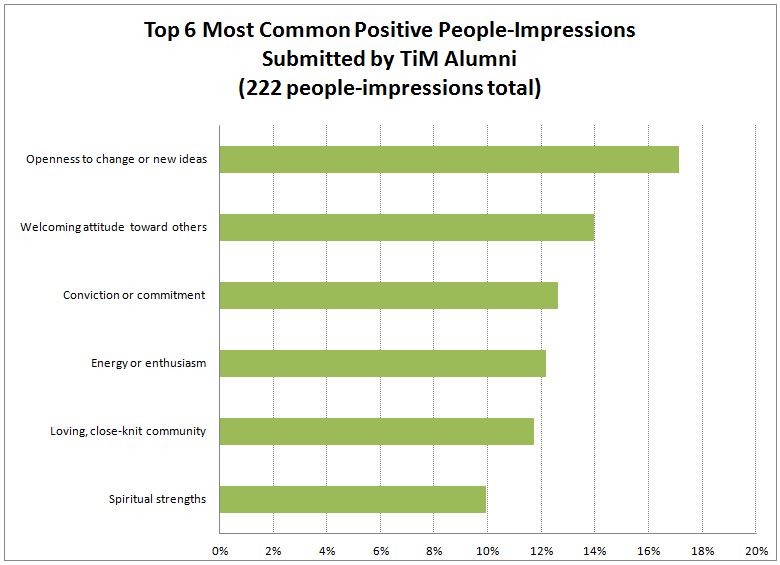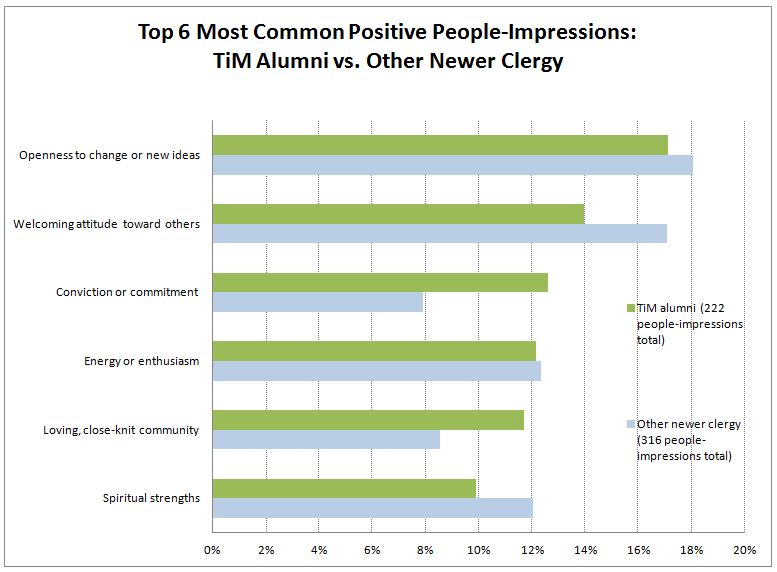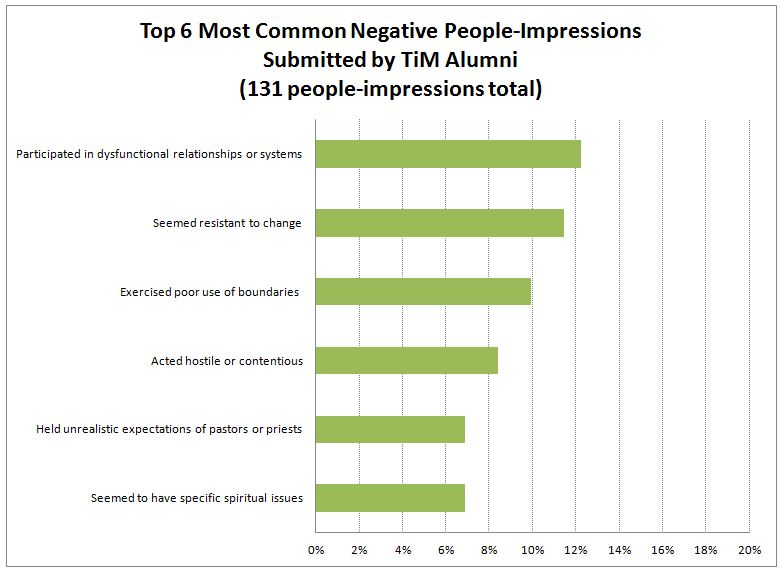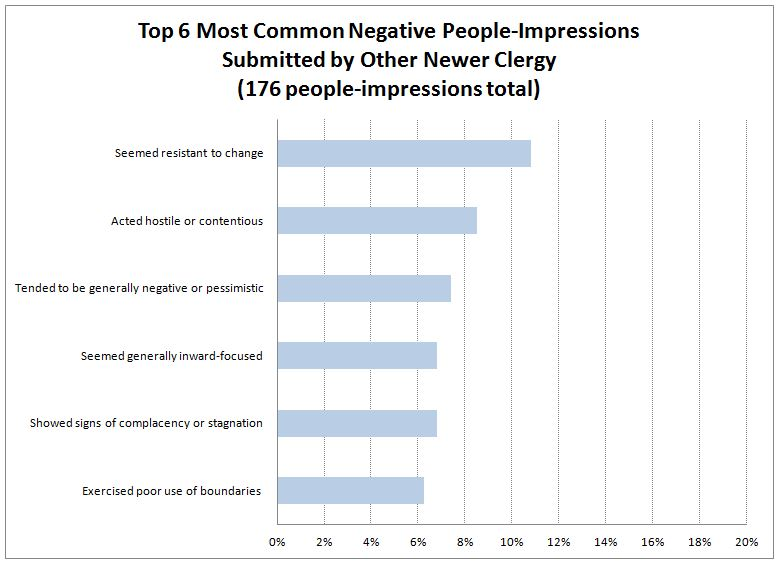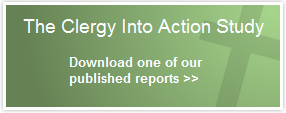What do you notice when you meet people in church for the first time? What catches your attention about the way they interact with you or with each other?
Our Clergy Into Action Study results indicate that when newer clergy approach a possible call or a new assignment, their first impressions of the church mainly focus on the people of the congregation.
So what qualities do they look for, in assessing what it would be like to lead and minister to these people specifically?
For the Transition into Ministry (TiM) alumni who responded to our survey, a key issue was the congregation’s attitudes about change. Approximately 17% of valid responses about their positive impressions had to do with the people of the church seeming open to new ideas and new ways of doing things. With our control group of newer clergy who did not participate in TiM programs, the rate was even higher, at 18%.
Conversely, a key negative impression for many newer clergy was the sense that the people of the church would resist change. Comments about church leaders and/or members clinging to the past or being afraid to try something new comprised more than 11% of the responses we received from TiM alumni and 10% of responses from our control group.
We see this as a positive sign. An earlier study found that effective clergy tend to approach their search processes as potential agents of change. They identify challenges and conflicts that will need to be addressed, but they also watch for qualities in the people that would make growth, change, and renewal possible.1
After attitudes about change, the comments submitted in response to our positive impressions question most frequently focused on congregants extending a warm welcome to others (14% for TiMs and 17% for non-TiMs).
We separated comments about the congregation welcoming the pastor or priest specifically into a different category. A tendency to welcome outsiders into the church and the community can be a key factor in evangelism, growth, and meaningful ministry. However, as explained in the “Markers of Strong and Effective Clergy Leadership” report, struggling clergy appear to look for congregations that will value them and take care of them.
The four other most common types of positive impressions described
- conviction or commitment to the church and/or to God;
- energy and enthusiasm (often described in terms of “vibrancy”) about the church and its work;
- a loving, often close-knit community; and
- spiritual strengths (for example, authentic faith or the desire to grow spiritually).
Responses about negative impressions were more varied. About 12% of TiM alumni responses but just over 5% of non-TiM responses recalled feeling concern about dysfunctional dynamics and systems being part of congregational life.
An almost equal percentage of TiM and non-TiM answers (8.4% and 8.5%, respectively) described people who appeared confrontational or hostile. A higher percentage of TiM participants than non-participants mentioned church members or leaders with boundary issues.
While we noted some differences between the responses from TiM participants and their counterparts, we did not see strong enough patterns to suggest that the TiM participants’ approach resembled that of the effective clergy group (in the previous study) significantly more than the control group did.
One similarity was striking, however. “Markers of Strong and Effective Clergy Leadership” reports that
“…effective clergy seemed to approach their parish ‘call’ process much more optimistically than struggling clergy. Effective clergy reported twice as many positive first impressions as negative first impressions about the people in the parish. In contrast, struggling clergy reported equal numbers of positive and negative first impressions about people in their parishes.”
Both groups surveyed in the Clergy Into Action Study reported significantly more positive impressions about the people of the church than negative impressions. Neither group submitted twice as many positive impressions than negative ones, but they did approach that ratio:
- TiM alumni reported 77% more positive impressions of people in the parish than negative ones.
- TiM non-participants reported 85% more positive impressions of people in the parish than negative ones.
This suggests that newer clergy in general benefit from an optimistic approach that served the effective clergy group well in the earlier study of experienced Episcopal clergy.
Related Articles
- Research: First Impressions of a Church: New Clergy Focus on People First
- Research: Choosing to Answer a Call: Do Transition into Ministry Programs Affect How Clergy Decide?
- Story: Reaching Out Toward the Future: What a Highly Effective Minister Looked For in His Next Church
1 John Dreibelbis and David Gortner, “Markers of Strong and Effective Clergy Leadership: Preliminary Findings” (research report presented at the 2002 Conference of the Consortium of Endowed Episcopal Parishes, New Orleans, LA, February–March 2002).


